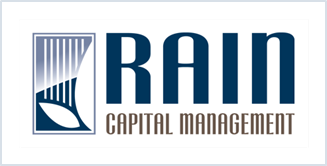Despite uneven growth and the start-stop nature of the COVID economy in 2021, the US (and most developed economies) registered the strongest economic growth in nearly four decades.
Toward the end of the third quarter of 2021, it became clear the economic rebound in the US would be more uneven than expected. A resurgent virus and signs of waning vaccine effectiveness held back the nascent recovery in the travel and leisure industries, supply-chain bottlenecks persisted and began to hamper production, a regulatory crackdown in China sent shudders through foreign markets, and back-to-back hurricanes in the eastern US further complicated the recovery.
The US economy surged through the second quarter on the back of massive fiscal stimulus and public health data indicating that the worst of the pandemic is behind us.
After a difficult 2020 and a sluggish start to 2021, we are finally able to envision a return to economic normalcy. As the year progresses, both a fiscal surge and the ongoing vaccine rollout will likely dominate the economic outlook. Fiscal support in the form of the $1.9 trillion American Rescue Plan is expected to provide $1.2 trillion (or roughly 5% of GDP) of additional spending to the economy over the course of just six short months and much of this is targeted toward lower-income households that are more likely to spend it.
The US will spend the better part of 2021 and beyond recovering from the pandemic that has left deep scars on the economy and labor markets. The good news in this story is that the vaccine came sooner and is more effective than expected. Furthermore, single-party alignment in Congress increases the chances of continued fiscal stimulus for the economy.
The recovery that took hold in May and June, bolstered by the $2.2 trillion CARES act and aggressive action by the Federal Reserve, began slowing over the summer and more dramatically into the Fall.
The second quarter saw broad financial markets rebound strongly, erasing nearly all losses experienced during the March meltdown. Markets were buoyant on the back of unprecedented fiscal and monetary support from policy makers around the world as well as early signs that COVID infection rates appear to be levelling off and may be past peak in some countries.
The economy has been receiving palliative care since it was forced to take a back seat to the medical crisis that is still unfolding around the world. A flattening infection curve in many places and talk of “reopening” the economy have lifted markets from March lows, in a bounce almost as violent as the initial selloff itself. But it is far too early to assess the economic damage caused by efforts to contain the spread of Coronavirus.
The Federal Reserve charged to the rescue in a big way in 2019. In the face of increasing trade tensions and recessionary forces bearing down on the economy, US central bankers reversed course and reduced short-term rates three times starting in late July and in October, took steps to increase liquidity in short-term lending markets. By December, investors began embracing the idea that the worst of the US-China trade war was behind us.



